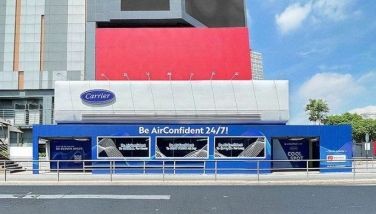Museums, the mind, and social progress

The museum at the Fort – the Mind Museum – beckoned to me the other day. Along with spouse and two grandchildren in my care, I enlarged the museum party to include my driver, his two daughters, and the grandchildren’s yaya. We had a picnic of sorts.
The high cost of entry initially turned me off. Adults pay P600 per. Discounts are for students and teachers. No child above two feet tall could be allowed free entrance. Young people are classified as students, at 25 percent discount of full entrance. There were four children, from ages two to 13 years, average age, around six years. There were two senior citizens in my party plus two adults (driver and yaya ).
I got by as a professor, discount improving from 20 percent (for senior citizen) to 75 percent (professor or teacher). One adult got free entrance (for bringing in a party of five). But still I paid P3,150, including VAT (!), for a party of seven that included four children.
The experience inside the museum, however, was first class. Everyone in the group enjoyed the displays. Most of the displays are play-oriented – tools for understanding first scientific and technological principles. Though much smaller in scale and depth, the science games at the Mind Museum remind me of those found at the Technology Museum of Innovation in San Jose, California – the home of Silicon Valley.
The Bonifacio Art Foundation, the Ayala Foundation, JP Morgan, and Tan Yan Kee Foundation among the major institutional donors and private individuals deserve a card of thanks for bringing this experience at our doorsteps.
“The National Museum, a dream to come true?†Our government has recognized the need to create a great National Museum. Though this museum has a long history, throughout the post-independence years, the National Museum had a moribund existence.
The National Museum law of 1998 changed all that. The museum was given much better funding. Most important, the government deeded to the National Museum the grandest buildings of the Republic, located in the country’s premium public park area.
These buildings were the former Congress of the Philippines building (which included the old Senate hall) and the former Department of Finance and the Department of Agriculture (now, the Tourism) buildings located in the area bounded by the Manila City Hall, Intramuros and the Luneta Park where the Rizal Monument is situated. Two buildings are now used by the National Museum, the old Congress building serving as the main house for the nation’s art collections and the former Finance building the ethnology collection.
The third building still requires that the Department of Tourism move out as required by law. Chances are that this will happen soon. President Aquino had publicly committed to redesign the building to house the natural history collection.
The National Museum is now well-funded. It has the support of government. The plans for the building restoration and redesign are now ready to go. It has a combined private-public sector board to manage its affairs. It has yet, however, to fulfill its promise.
“Museums in my education as a person.†How lucky are those who have visited many of the world’s museums. I am one of those lucky persons. My journey through life (which has little to do with museums) has enabled me to see major cities and their museums as well as quaint historic small towns and places with museums.
Museums give us a chance to scan the world in which we live as it was, as it is, and as it will be. Through them, a nation can document its history more convincingly, showcasing practical achievements and providing clues about its lofty aspirations.
Museums are often associated with the safekeeping of artifacts and works of art and culture. They are the custodians of a country’s history and civilization. Museums are the best showcase also for achievements in science and technology covering: industry, agriculture, transportation and commerce. My encounters with museums of science and technology in industrial countries have excited me as much as those with museums of arts and culture.
“State of Philippine museums today.†It is a fair statement to say that few museums in the country are in good shape. Of course, in the case of the National Museum, we still have to see the museum we can all be proud of.
The best maintained among Philippine museums today are run as private museums with a hefty price tag at entrance. The state of the public finances and the large demands on those resources has led to the under-prioritization of museums in budgetary outlays.
Ideally, museums for the general public should be “public goods.†Public goods, once provided, are accessible to all. But in this world of tight budgets, museums as public goods have become partially private goods. When the price of entry is high, the museum visit is like going to the theater or a private concert.
In the country, there are quite a number of local museums and small museums dedicated to specific topics. Many of these are grossly underfunded. Local communities need to put resources for the maintenance and upkeep of museums or should avoid making the effort until they could. It is also important that their displays are truly useful and not whimsical. I was once guided to a museum in the heart of a provincial capital. The displays featured mainly the doll collection of the governor’s wife from all over the world!
There are some public offices where museum collections are maintained. The Bangko Sentral ng Pilipinas (BSP) has for years been maintaining a money museum and a collection of paintings for its offices. Malacañang also maintains a museum. For understandable reasons, these are well-funded museums.
The two best kept private museums in the country are the Ayala Museum, which is an excellent museum run on modern, state of the art standards, and now, the Mind Museum. Both museums are small museums, but they do their missions well except in one regard.
They are run on a private basis and have high priced entrance fees, despite their discount mechanisms. The result is that they are open only to those who can afford to pay, hardly reaching the middle class, and definitely excluding effectively the poor’s access to them. Such institutions need to work out outreach programs to reach a wider audience.
My email is: gpsicat@gmail.com. Visit this site for more information, feedback and commentary: http://econ.upd.edu.ph/gpsicat/
- Latest
- Trending




























